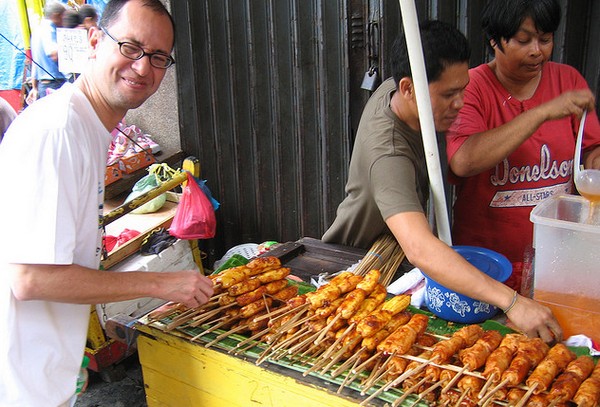Perhaps a keen or not-so-keen observer might wonder how Filipino food originated by merely looking at the ingredients, cooking methods or even just the name of dishes.
The history of Filipino food also goes along with the history of the Philippines as a nation. Filipino food is indeed a gastronomic telling of Philippine history.
Geographic and trade influence
As a country surrounded by water and islands blessed with fertile soil, early Filipinos ventured out in the sea for a rich catch, into muddy rice paddies to plant rice or into the woods to hunt for abundant wildlife. The harvest and catch were cooked in simple manner: boiled, steamed, roasted or broiled over an open fire.
Trade with other Asian nations introduced a number of enhancements into Philippine cuisine, most notably toyo (soy sauce) and patis (fish sauce), as well as the method of stir frying and making savory soup bases. Vinegar and spices were then used in foods to preserve them.
The Chinese who came to trade and brought their own ways of cooking. Many of them married locals and introduced their dishes, and thus Filipino-Chinese food came to be. The names identify them: pancit are noodles that come in various forms such as bihon, Canton, miki or sotanghon; lumpia are vegetables rolled in edible wrappers; siopao are steamed, filled buns; siomai are dumplings.
When Spanish came, Filipinos were exposed to a flair for rich food, the way Europeans chose to prepare it. Stews such as the cocido and puchero, rice-meat dishes and elaborate desserts such as brazos, and tortas imperiales are generally considered fiesta food, and most often found on the dining tables of the upper classes. The food influences they brought were from both Spain and Mexico, notably as the Philippines became part of the galleon trade.
Popular cuisines the Spaniards introduced into the Filipino tables include paella, the dish cooked in the fields by Spanish workers, came to be a festive dish combining pork, chicken, seafood, ham, sausages and vegetables. Relleno, the process of stuffing festive capons and turkeys for Christmas, was applied to chicken, and even to bangus, the Philippine milkfish.
Christmas, a new feast for Filipinos that coincided with the rice harvest, came to feature not only the myriad native rice cakes, but also ensaymadas (brioche-like cakes buttered, sugared and cheese-sprinkled).
American influence did not only bring their staple food of burgers, pies and salads. They also brought technology like the refrigerator and microwave ovens that made cooking easier and preserving food longer now possible. The Americans introduced to the Philippine cuisine the ways of convenience: pressure-cooking, freezing, pre-cooking, sandwiches and salads; hamburgers, fried chicken and steaks.
Filipinos did not wholly adopt to the intended taste as the originally intended to be. We made variation of foreign food to suit our taste such as Pinoy spaghetti which is sweeter than the original Italian version and pansit Malabon on which oysters and squid have been added into the Chinese noodles. This also includes sweets consisting with Spanish origins like yemas, dulces de naranja, membrillo, but also include local fruits like guava, mango or durian as additional ingredients.
Combination of foreign influences was also observed during the earlier history. When restaurants were established in the 19th century, Chinese food became a staple of the pansiterias, with the food given Spanish names for the ease of the clientele: this comida China includes arroz caldo (rice and chicken gruel); and morisqueta tostada (fried rice). Lechon, the spit-roasted pig, may have Chinese or Polynesian influence but has Spanish name.
Cuisines found in the Philippines were also influenced by other global favorites: French, Italian, Middle Eastern, Japanese, Thai and Vietnamese. As globalization brings cultures closer, Filipino food continues to transform itself with help of foreign influences and modern technology.
And while it’s not as popular as its other regional peers, Filipino cuisine is fast becoming more known to the world, thanks both to Internet technology which helped spread its taste, and the Filipino diaspora.
While Filipino cuisine has not gained similar traction in the international food scene with its regional peers, with fewer Filipino restaurants established outside the Philippines, it is getting the recognition and exposure it has so deserved.
